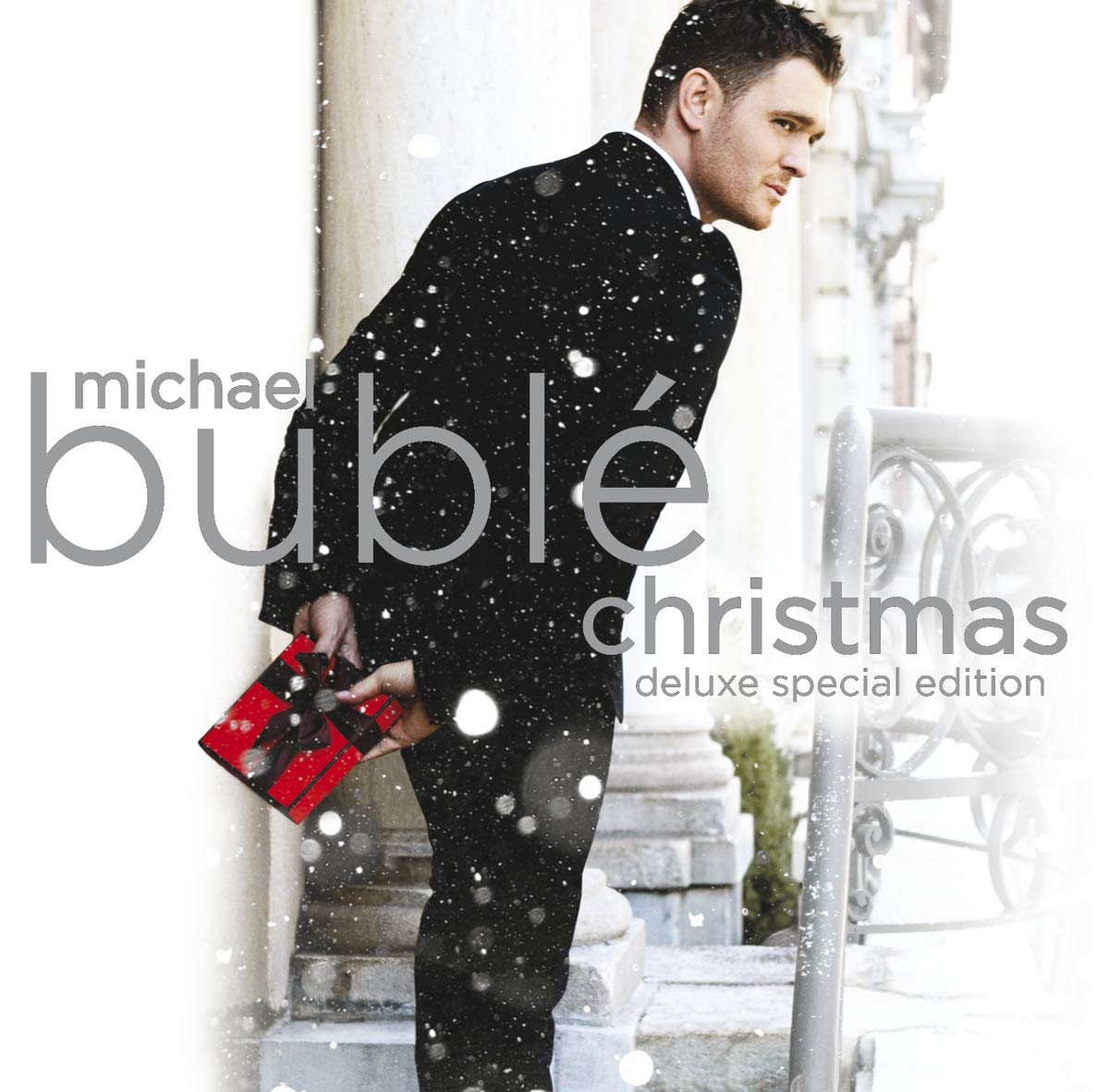The seventh studio album of the Canadian singer, Michael Bublé, Christmas, was released on three separate days in Ireland, the United Kingdom, and the United States. Released on October 25th, 2011, in the US, it marked Michael’s first Christmas album. The project was released through both Warehouse Studios and Vancouver and Capital Studios. By the end of 2011, Christmas rose to number one on the Billboard 200, which marked the third time Bublé had found his album at that spot. Furthermore, he won a Juno Award for Album of the Year, which was the first holiday album to do so. To this day, the album is still his most successful one, selling more than 16 million copies worldwide. This album has consistently been considered one of the biggest Christmas releases of all time.
Introduction
Although this album is a staple of Christmas time in America, it does not live up to its hype. The production on this album is very consistently good. Michael utilizes a plethora of brass, strings, and pianos to create some absolute great instrumentation. His vocal performance, however, is all over the place. He has some great tracks in which he sounds great, however, there are a handful in which he does not sound good. Many of the features also do not provide much to this project. Obviously, all these tracks are covers to original Christmas songs, so with it comes comparisons to these songs. 90% of these tracks do not compare to the originals, certainly detracting from the overall album.
Production
Production was headed by the trio of David Foster, Bob Rock, and Humberto Gatica. They attempted to create a similar sound to all the original songs, whilst creating their own spin on these tracks. The often added many different forms of brass sections to add, often layering such sections over previous usages of trumpets, or other brass instruments. They often also included many layers of piano and other keyboard instruments, which were mainly featured at the later stages of the song. Many of these songs feature instrumental breaks or solos, often breaking the common nature of the instrumentation, adding a neat layer of depth to an otherwise bland project. While these songs do feature many different sections of instruments, there were a lot of similarities between these tracks, and a lot of these project fail to bring anything of creative substance that sounds good.
Vocal Performance
One of the prominent features of Bublé’s career is his voice. Having near complete control over his vocal range, he easily can converge a variety of styles to create an amazing song. While he certainly capitalized on it in some areas of Christmas, he felt very lackluster in others. Songs like, “Holly Jolly Christmas” and “All I Want for Christmas is You,” feature excellent control of his vocals and, therefore, are greatly benefitted by it. Other tracks, such as “Jingle Bells” and “Santa Baby,” feature very poor vocals, which greatly takes away not just from the entire track, but the project as a whole.
Comparisons
As far as this project goes, it isn’t an original release. As said prior, the album is simply Michael taking his own twists on classic holiday songs. While some, like “Blue Christmas” and “Santa Baby,” stick to the original sound, extra twists are certainly added throughout, whether for the better or worse. I will say when Michael sticks to the general original sound, the track comes out much better. When he adds different twists, it seems as if they had tried too hard to be different, ultimately taking away from the track. The best example of this is clearly apparent in “Christmas (Baby Please Come Home),” where they added too much difference that it clouds out the highlight of the whole song: the vocals. All in all, I would stick to a majority of the original songs over Michael’s cover, as they simply do what they needed to much better than what was done here.
Conclusion
Christmas, upon release, had received much hype, however, once relistening, it does not live up to the hype it had gotten. The production was great in certain songs; however, it fell flat for a majority of the tracks here. Bublé’s vocals were top notch, but there were also times in which he had tried too hard to provide a different sound. All in all, this project sought out to be too different, which ultimately hurts the listen.
Song Rankings
- “Holly Jolly Christmas”
- “It’s Beginning to Look a Lot like Christmas”
- “White Christmas” (feat. Shania Twain)
- “Cold December Night”
- “Santa Claus Is Coming to Town”
- “Blue Christmas”
- “Have Yourself a Merry Little Christmas”
- “All I Want for Christmas is You”
- “Mis Desos / Feliz Navidad” (with Thalia)
- “Silent Night”
- “I’ll Be Home for Christmas”
- “Ave Maria”
- “Christmas (Baby Please Come Home)”
- “Santa Baby”
- “Jingle Bells” (feat. The Puppini Sisters)
Strongest Track
The strongest track on this project is without a doubt “Holly Jolly Christmas.” This song has a very simplistic production style, which is what holds it over the rest. It is a song that doesn’t try too hard to be different from the original, and it succeeds in doing so. Michael sounds great on this track also, which again holds the track much higher than the other songs.
Feature Rankings
- Shania Twain ~ “White Christmas” (feat. Shania Twain)
- Thalia ~ “Mis Desos / Feliz Navidad” (with Thalia)
- The Puppini Sisters ~ “Jingle Bells” (feat. The Puppini Sisters)
Final Notes
Song rankings are always subject to change over time, so don’t take these too to heart. They also are just our opinion. We would love to hear your opinions, so leave them in the comment section below. We also suggest subscribing to our blog. To do so, go under the tab “Contact” and fill out the form. That will allow you to receive emails of new blogs and maybe get them ahead of time. Finally, go give Christmas a listen for yourself.


